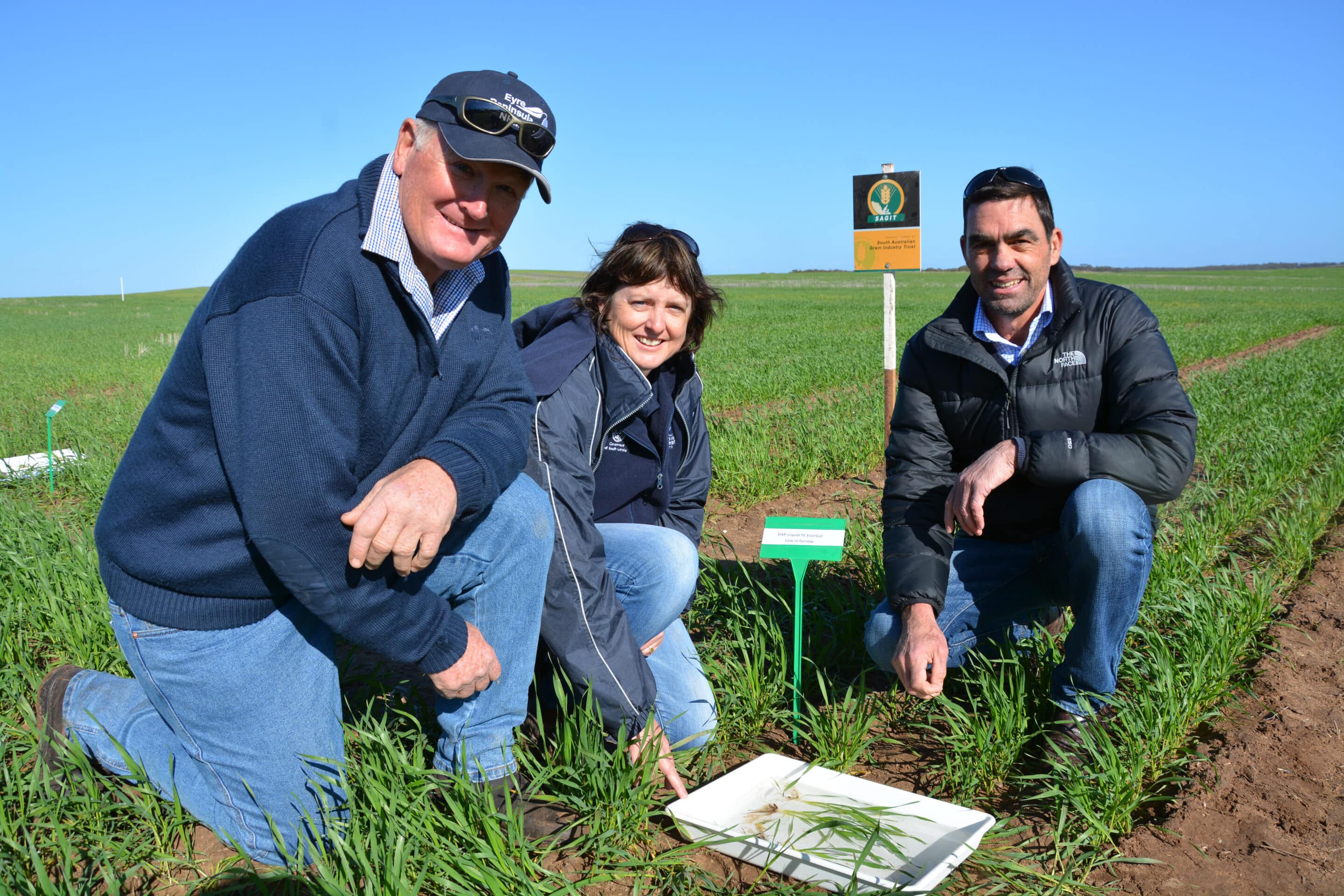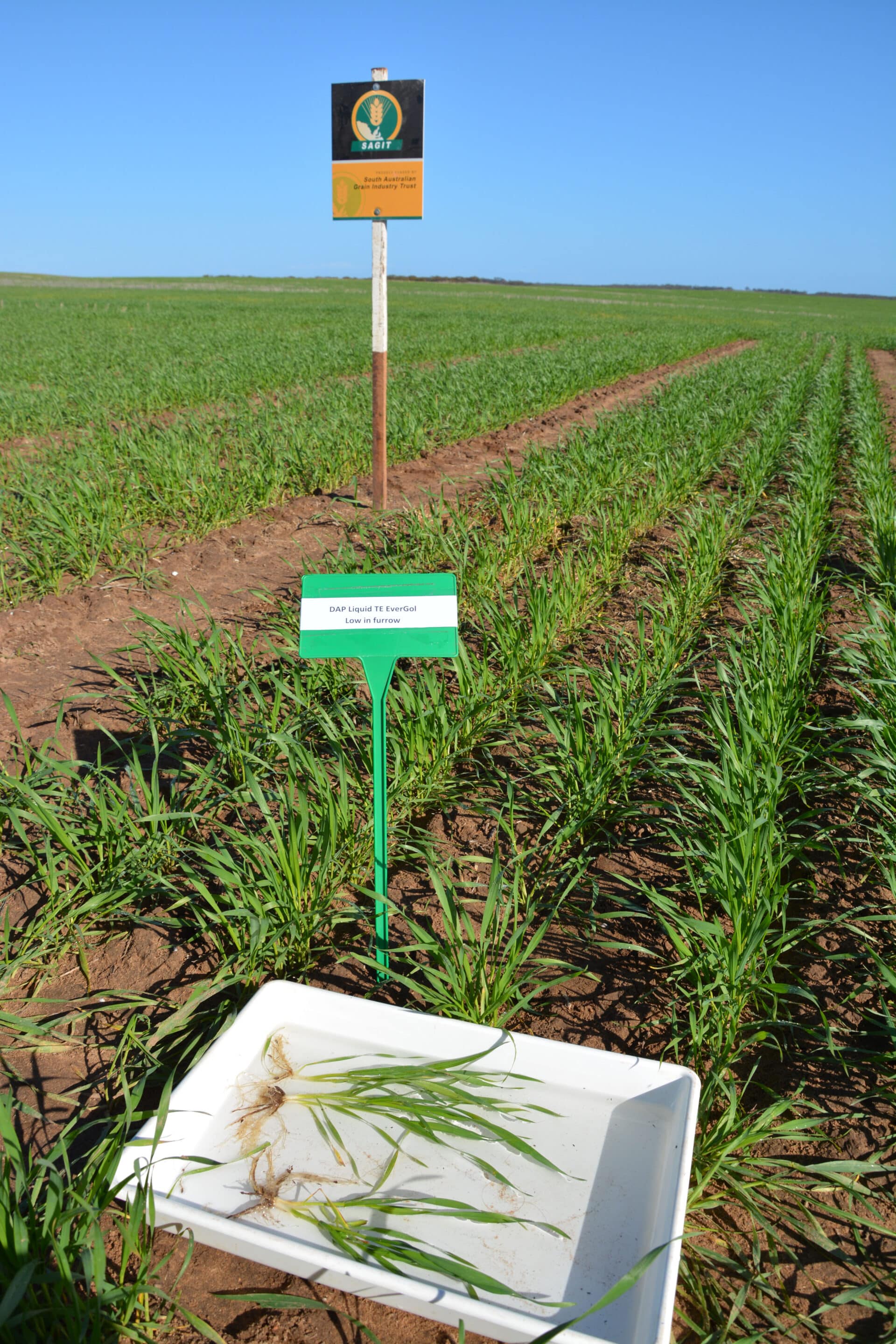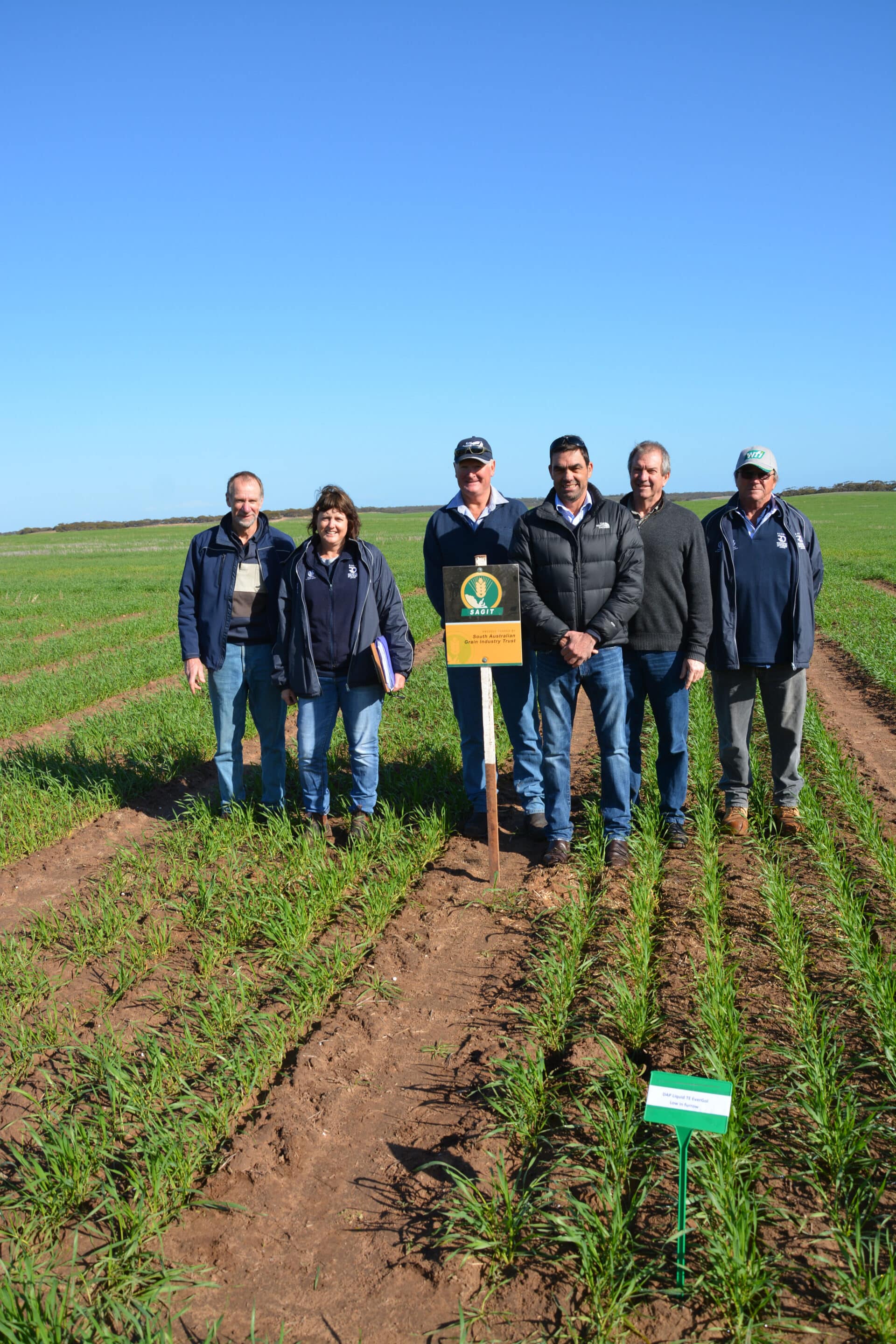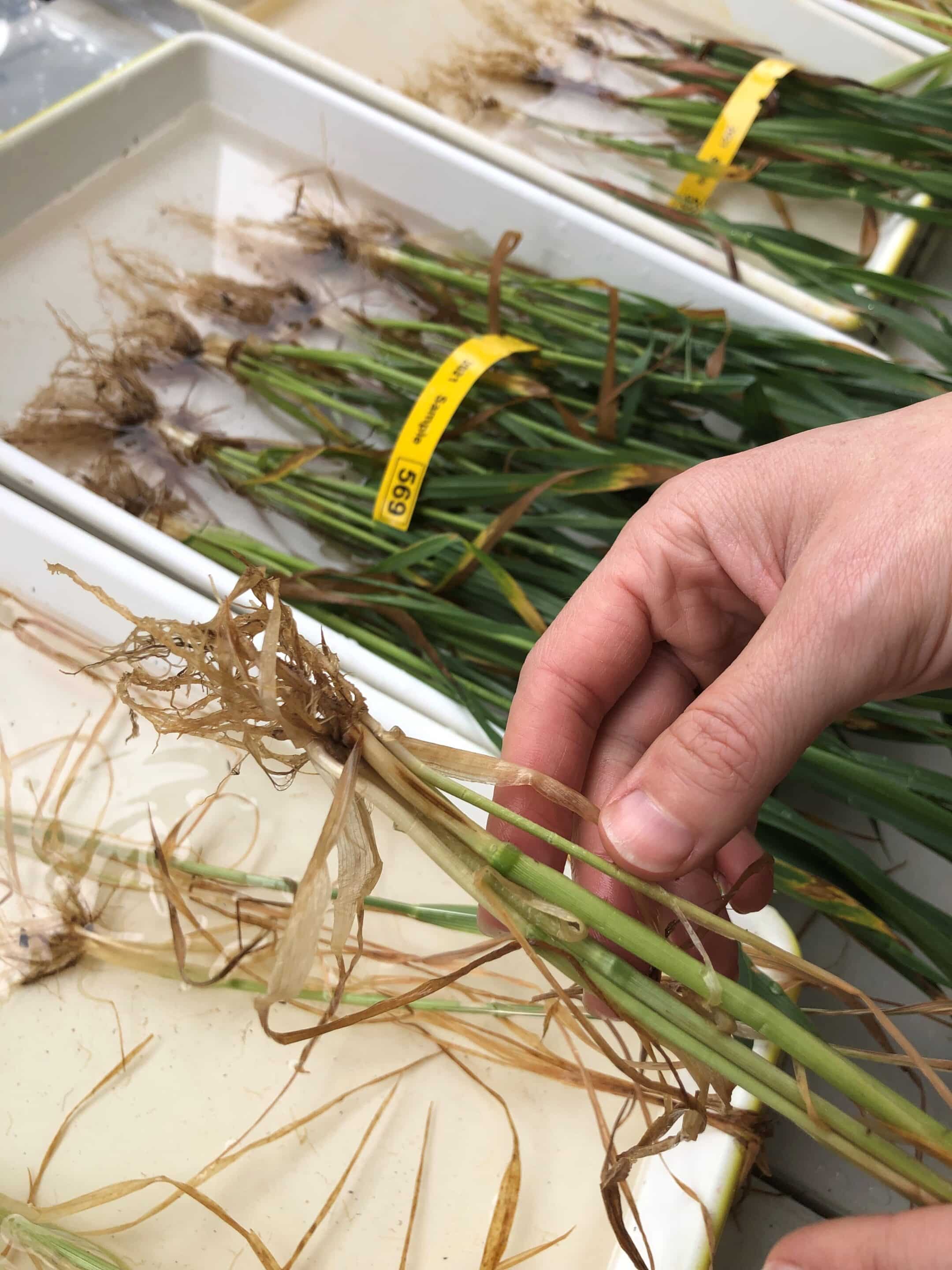START
FINISH

Summary
Research trials were undertaken at three sites (two wheat, one canola) on Eyre Peninsula to assess the potential of fluid nutrient delivery systems, targeting phosphorus (P); trace elements manganese, zinc and copper; and fungicides for rhizoctonia (wheat) and blackleg (canola).
Fluid delivery systems for micronutrient or fungicide application did not result in any significant advantages. Although fluid delivery of P on some soil types resulted in higher wheat yields (especially in drier seasons associated with low soil moisture), this did not necessarily equate to greater economic return compared with granular application.
There are potential benefits in using fluid fertiliser to deliver P if the soil type is responsive to phosphoric acid; growers should take this into consideration if they are looking to invest in these systems.
Background
Compared with granular or spray (foliar) application, fluid delivery systems can allow more precise application of micronutrients, P fertilisers and fungicides. Applying micronutrient solutions in-furrow at seeding can reduce spraying requirements and mixing with in-season herbicides, and applying liquid P fertilisers may increase yields in responsive grey and red calcareous soil types. In-furrow applications of newer fungicide products for rhizoctonia management may improve root health and grain yield in wheat, and blackleg control in canola.
Research Aims
The core objectives of the project were to:
- Assess the potential for fluid delivery systems to improve yields and economic returns.
- Provide guidelines for farmers on the best options for fluid delivery systems at seeding to increase crop yields and to decrease the impact of crop diseases in current farming systems across Eyre Peninsula cropping regions.
In The Field
Trials were conducted in 2014, 2015 and 2016. In each season, wheat was planted at Warramboo on red sandy soil and Streaky Bay on grey calcareous sand. Canola was planted on grey loamy clay at Coulta in 2014 and 2015, and Wangary in 2016.
Fluid delivery applications for all crops included liquid P fertiliser (phosphoric acid), micronutrients (manganese as the main micronutrient, as well as zinc and copper), and a range of fungicides for rhizoctonia (wheat) and blackleg (canola).
All trial crops were assessed for yield, fungal disease load and economic return, relative to the dry or spray delivery systems that had been used by the growers previously.
Selected farmers in Buckleboo, Lock, Cleve, Mudamuckla, Piednippie, Miltaburra, Minnipa and Streaky Bay established demonstration strips for evaluating plant growth, root health, and grain yield and quality. These demonstrations trialled a range of fluid-delivery applications, including fungicide-only, fungicide and trace element mixes, soil wetters, trace elements, and biological products.
Overall, the demonstrations showed little improvement in disease management or yield.
Results
WHEAT
On responsive soil types at Streaky Bay, applying phosphoric acid as a liquid fertiliser resulted in 13 per cent and 8 per cent higher yields in 2014 and 2015, respectively, compared with the same rate of P delivered in granular fertilisers. However, granular fertiliser delivered greater economic returns per hectare (t/ha). In 2016 at Warramboo, fluid fertiliser application resulted in an 8 per cent yield increase, which did show a positive economic return over granular fertiliser.
Compared with foliar application or coated fertilisers, the trace element response of fluid delivery systems showed no advantage.
Applying liquid fungicides resulted in small and variable yield advantages at Warramboo in 2014 and 2016 and Streaky Bay in 2016, with the greatest yield benefit only 0.22 t/ha. Large-scale demonstrations by growers across Eyre Peninsula with in-furrow fungicide applications at seeding did not reduce rhizoctonia or produce yield benefits over three seasons.
CANOLA
Fluid delivery systems did not result in any significant yield or nutrition differences compared with previous approaches. Fluid delivery of fungicides for blackleg management did not increase canola yields in 2015 or 2016.
Project Participants
SARDI Minnipa: Amanda Cook, Ian Richter
Growers: Darren Sampson, Luke Kelsh, Bruce Morgan, Trevor Gilmore, Graeme & Heather Baldock, Andrew & Jenny Polkinghorne, Matt & Amanda Price, Peter Kuhlman, Simon & Tania Patterson, Darren, Georgia & Carolyn Mudge, Bruce & Kathy Heddle, Phil & Jan Wheaton
The Problem
Applying fertiliser, fungicides or micronutrients in granular or spray form at blanket rates may not achieve optimal results for different crops or locations.
The research
Variable-rate fluid delivery systems for fertiliser, micronutrients and fungicides were trialled on the Eyre Peninsula on wheat and canola to assess yield and economic outcomes.
More information
Amanda Cook, SARDI Minnipa Agricultural Centre
T: 08 8680 6200
E: [email protected]
Value for Growers
Although fluid delivery systems did not provide any significant yield or economic advantages in these trials, there are circumstances in which they may offer benefits. The adoption of fluid fertiliser systems will depend on growers’ soil types for phosphorus responses, trace element deficiencies, timing of application (in-furrow at seeding or in-crop), and machinery or machinery upgrades.
The Fluid Fertiliser Manual (fluidfertilisers.com.au/the-fluid-manual) provides a comprehensive description of fluid fertilisers, mixing fertilisers and application technologies, and includes a simple economic calculator for growers to compare costs and responses of fertiliser types.
Final results were communicated to Eyre Peninsula growers at the 2017 Minnipa Agricultural Centre Field Day as well as eight farmer meetings (Minnipa, Piednippie, Charra, Port Kenny, Buckleboo, Cowell, Cleve and Lock) in 2018. Numerous field and sticky beak days were conducted throughout the trials, reaching hundreds of growers and agribusiness representatives over the duration of the project.
Latest Research Projects





